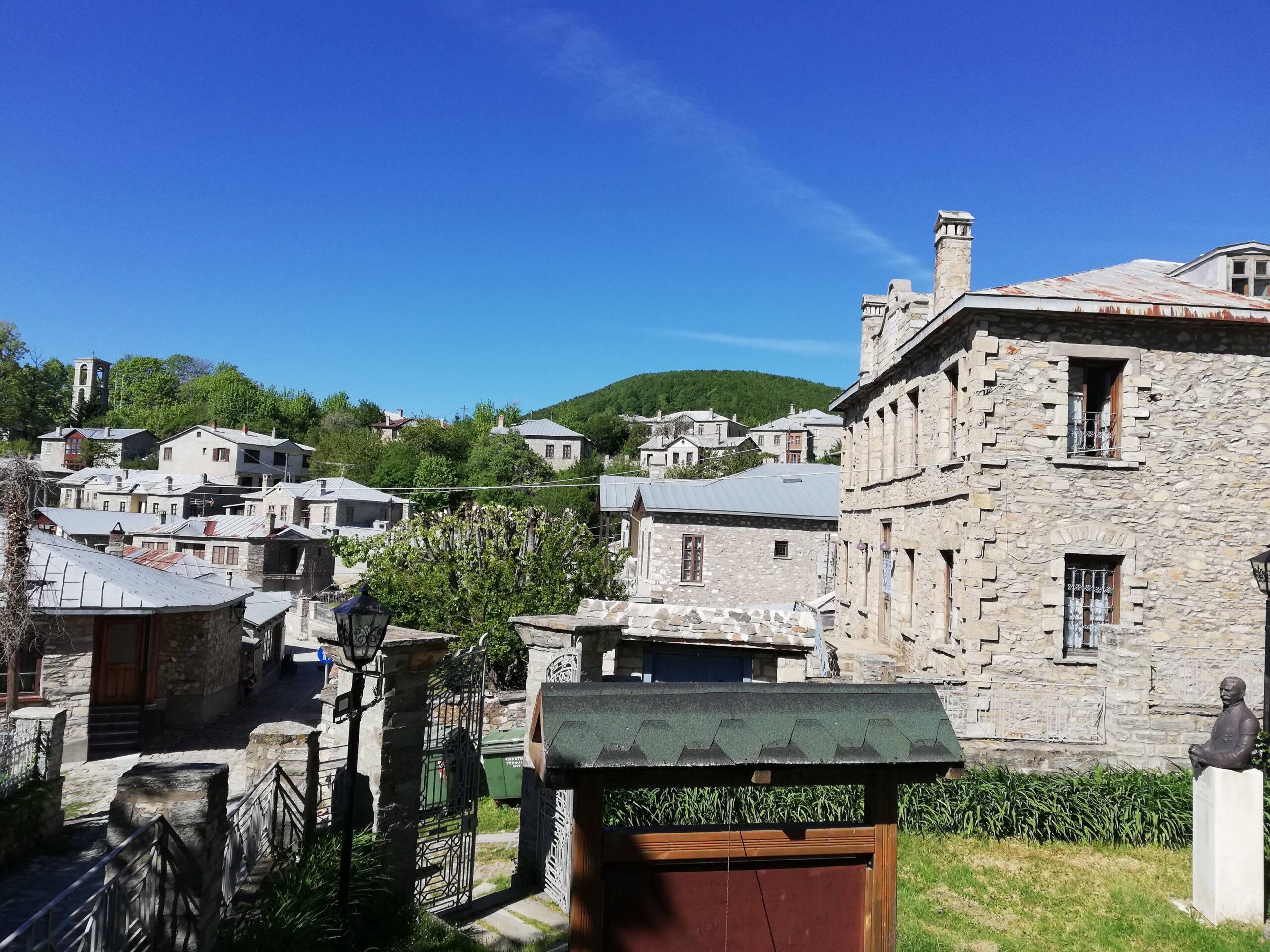The manor village of Macedonia hospitably recounts its history amid beeches and cobbled lanes.
Your first meeting with Nymfaio feels like love at first sight. Perched at 1,350 m amid a dense beech forest, the village gleams like a stone jewel: manor houses with slate roofs, well-laid cobbled lanes, courtyards with oleanders, and a crisp, crystal air that wakes you up from the inside. It doesn’t take you back to a vague “past,” but to its own years of flourishing—when enterprising Vlach merchants and master silversmiths brought home wealth, craft, and ideas from their travels.
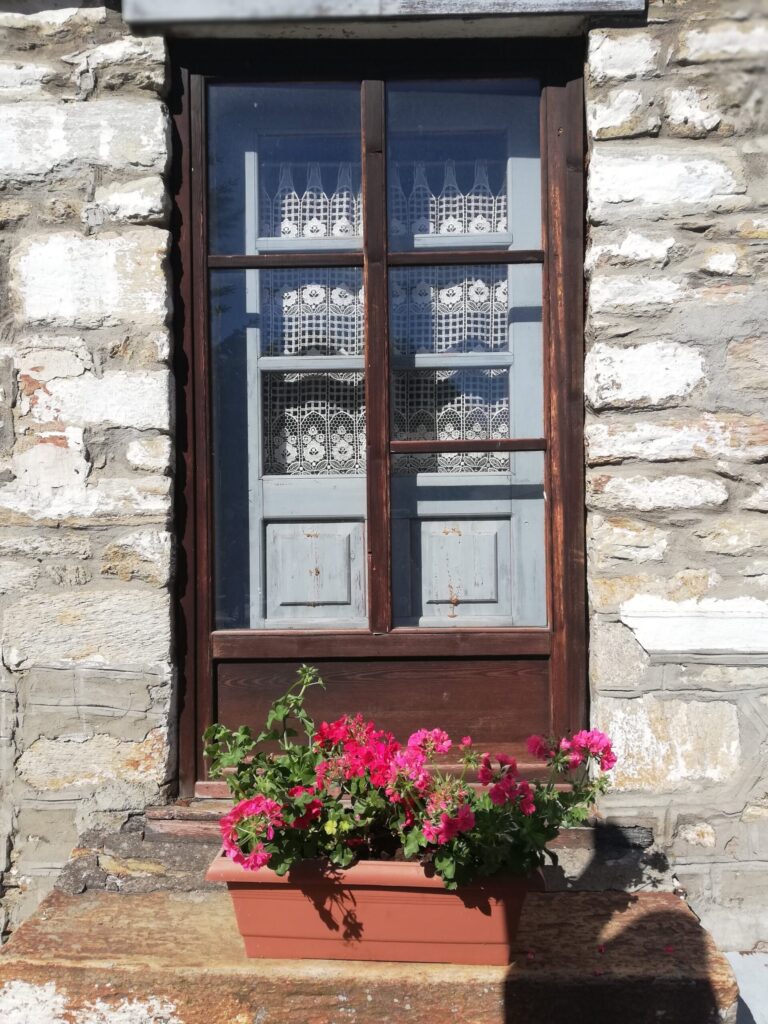
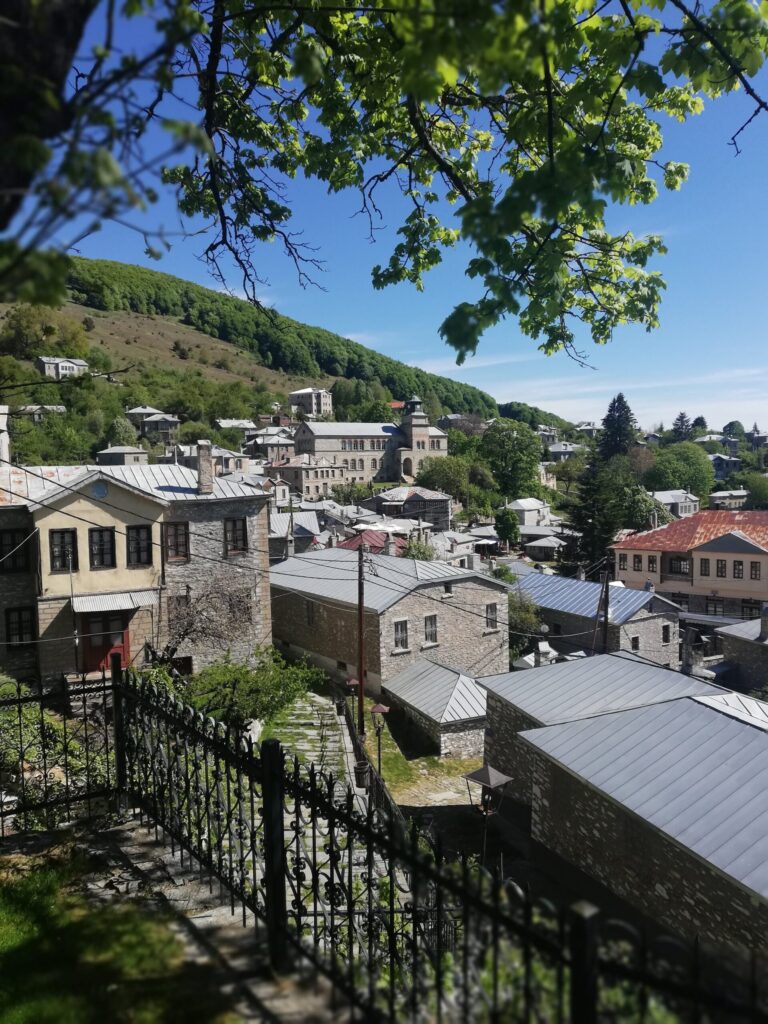
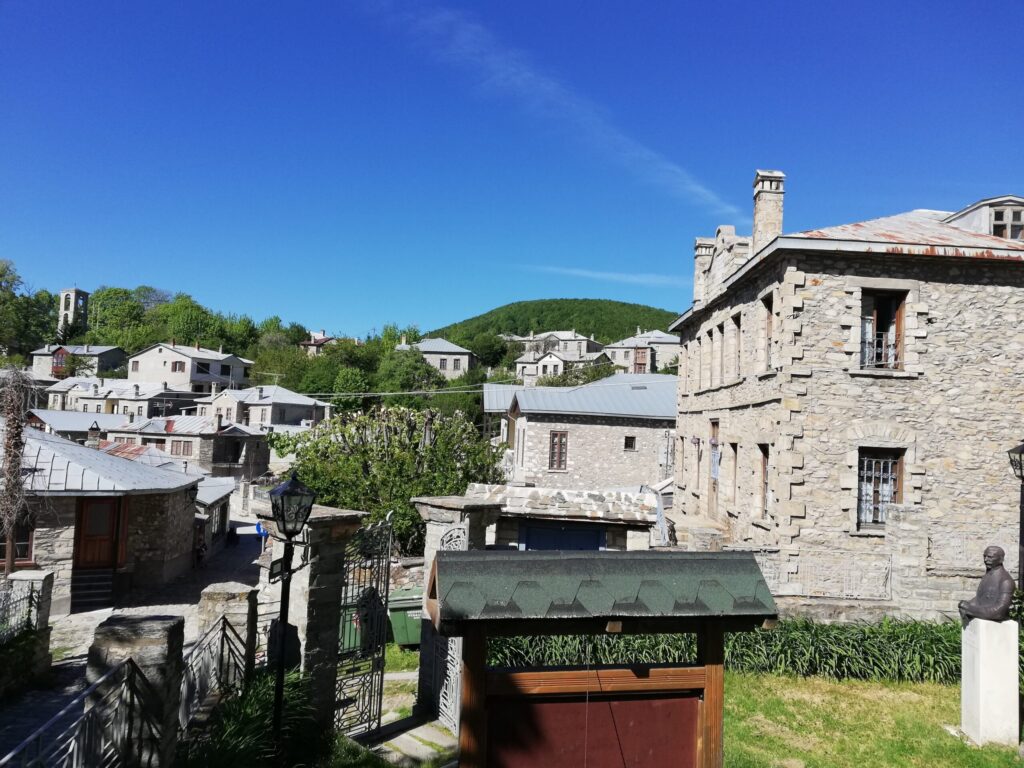
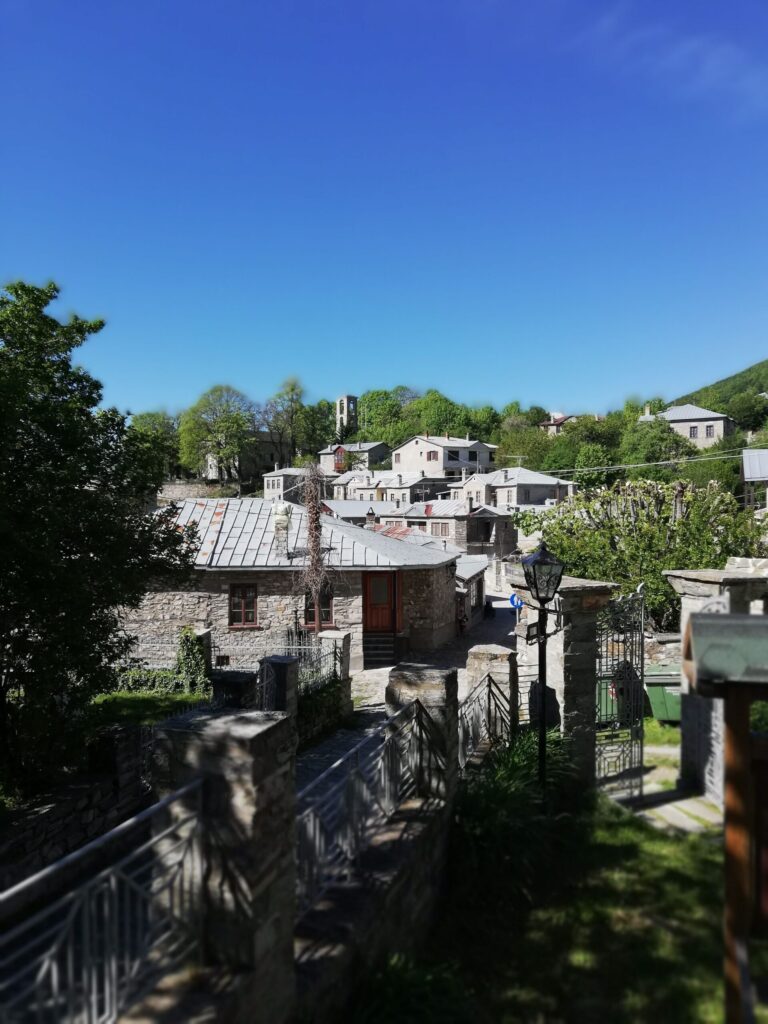
Begin your ramble at the stone school with the clock tower—the emblematic Nikios School—and wander down to the square. Somewhere there you’ll find Café Enderné for a tasty pause: handmade pie with Florina peppers, “Greka” yogurt with spoon sweets, and homemade crêpes. In the forecourt of Agios Nikolaos, with its crystal chandeliers and green marble, you might run into Father Giannis. A few minutes are enough for a short lesson in local history and the kind of human stories that keep the village’s heart alive.
Stories of a Name
Its roots run deep. Nomadic Vlachs settled here from the 14th century, trading and practicing the art of silversmithing, traveling as far as Egypt and bringing back art and new ideas. The village changed names—Niveasta (“Bride,” “Unseen,” “Snowy”) and Neveska—until it officially became Nymfaio in 1928. Post-war emigration hollowed it out, but in the 1990s the locals took action: they relaid the cobbles, restored manor houses and squares, and breathed life back in. That’s why Nymfaio today is no stage set; it’s a living community. The handsome houses aren’t merely “backdrops” for hospitality—they are homes with stories.
Nature and Ethos
From the village, a paved path leads to Arcturos, the Brown Bear Sanctuary and environmental education center. It’s not a zoo; it’s a place where animals that could never safely return to the wild find refuge. A little farther on, toward Agrapidia, there’s a corresponding refuge for wolves. These are experiences that connect visitors—young and old—to the mountain with respect, not as tourist spectacle.
Walking with Character
Nymfaio is made for walking. Short circular routes unfurl around the settlement: winter snows whiten the roofs, spring scents the forest, summer stays cool while the cities swelter, and autumn gilds the beeches. On the edge of the village you’ll see the half-ruined headquarters of Pavlos Melas, old corners that tell stories of resistance and endurance. And if you crave a dose of freedom, a ride with the local riding club gives the forest a cinematic perspective.
Flavors and People
At the entrance, at “Linouria,” small talk comes easy—here, stories find you. Take home local Xinomavro from the wider wine-growing area, along with pulses and herbs from the Women’s Cooperative. They’ll find a place in your pantry, but first they’ll fill your kitchen with the aromas of the mountain.
When to Go
Winter for alpine scenes and firesides, spring for blossoming forest, summer for cool mountain air, autumn for beeches in gold and copper. Mountain weather turns on a dime—dress in layers.

